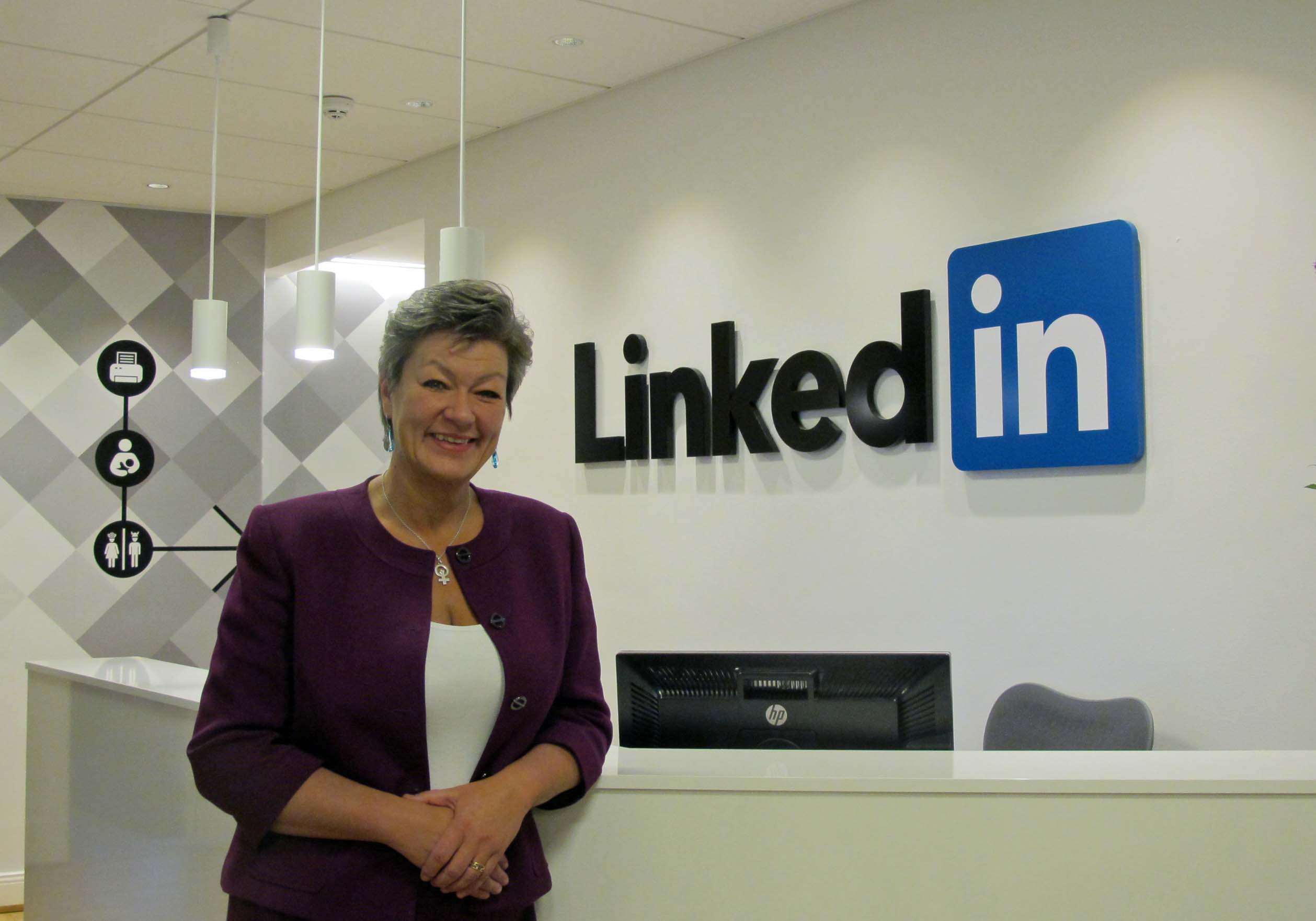It is Friday afternoon at the end of January, and Ylva Johansson has
just come out of a meeting with leaders from the global professional
networking service LinkedIn. Over one and a half hours they have
covered many issues, including labour market trends and matching.
“LinkedIn is an interesting and modern player when it comes to
matching in the labour market. We face great challenges with improving
matching. People move around more, matching happens more often and this
is good. I wish there was even more mobility and even more matching in
the labour market, but it is very clear that right now the Public
Employment Service cannot deal sufficiently with these demands,” says
Ylva Johansson.
“My vision is that the employment service can work with other
players who work with matching to create a well functioning labour
market, and in this context I believe LinkedIn could play an important
part.”
332 million members
LinkedIn was officially founded in 2003 and now counts 332 million
members worldwide. In October 2014 the number of Swedish members passed
two million and there are three million members in the other Nordic
countries. The company will shortly be presenting membership figures
for each country. Members use LinkedIn to publish their CVs, create
networks, follow the companies which interest them and to gain access
to articles relevant to their profile.
Businesses use the professional network for marketing, but also to
showcase themselves as potential employers, for instance by creating
special career pages. LinkedIn can also offer businesses special
solutions which make it easier to attract and find the right talent.
One such solution is to maximise their search for new staff and to
match them with LinkedIn’s members worldwide.
“An ordinary job advert reaches those who are looking for a job, but
here the employer also gets in touch with people who aren’t actively
reading the ads. This creates a much bigger reach,” says Anoek
Eckhardt, LinkedIn’s communications manager who is based in the
Netherlands.
Can map skills in a town
Using their large membership mass, LinkedIn can provide information
about the skills available in a certain town or region, allowing a
company or city to find out where in the world they can find the talent
they need. Anoek Eckhardt uses an example from his own home city to
illustrate how they work. Amsterdam City wants to attract
technologically skilled people to create a techno hub in Europe. Using
LinkedIn they have mapped the skills of people who are moving to
Amsterdam, who are leaving the city and why.
“We can provide this knowledge and then the city can decide how it
wants to use it. It could be interesting for them to get to know the
technologically skilled people who already live in Amsterdam, and their
contacts,” says Anoek Eckhardt.
In talks
There are also talks to establish a cooperation between the Swedish
Public Employment Service and LinkedIn.
“We have met twice and have had an open debate about how we can work
together. We are interested in anyone who can contribute to improved
matching. A lot of the matching happens digitally these days,” says
Anders Gawell at the Public Employment Service.
They are looking at how relevant information can be shared between
the Public Employment Service and LinkedIn. It could, for instance,
allow a jobseeker who uploads a CV to share it on LinkedIn with a
simple click. They have also talked about how LinkedIn could contribute
to the open online seminars which the employment service is planning
for the spring and autumn, for instance by teaching how to market
yourself both as an employee and employer.
“We need to get better at helping people navigate in the digital
jobseeker world. It is also easy to have your skills verified using
LinkedIn’s network,” says Anders Gawell.
Not competitors
He does not consider LinkedIn or other players to be competitors to
the employment service. On the contrary; cooperating with many players
who work to make it easier for people to find jobs is nothing but
positive.
“We want the employment service to work as a hub for different kinds
of cooperation,” he says.
Ylva Johansson is positive to the talks between LinkedIn and the
employment service. She thinks it is a good, interesting and right
thing to do. She also wants to highlight another issue which has come
into focus after her meeting with LinkedIn — dealing with employers who
struggle to find the right kinds of skills.
She also believes LinkedIn can be important for people who are
further away from the labour market.
“That is exactly what I believe a cooperation between the employment
service and LinkedIn could lead to. And if you have two million members
from Sweden’s labour force today, you are looking at nearly half of the
total Swedish labour market. You will then have bypassed the most
established routes,” says Ylva Johansson before she hurries along to
her next meeting.





